Building Material Makers in Taiwan Ride Green Wave Successively
2008/10/08 | By Judy LiTo keep up to the rising eco-protection trend globally that is increasingly opening new windows of opportunity and generating more demands in areas with significant consumer bases whose priorities are more eco-sensitive than cost-driven, Taiwan's manufacturers of building materials are trying to make the most of such market changes: by increasingly using eco-friendly, sustainable materials in production.
Eco-friendly materials are defined as those that are safe, nontoxic, recyclable and, especially upon disposal, will cause the least harm to nature. Buildings or structures made of eco-friendly materials are called green buildings, which help keep the ambient environment and occupants in optimal conditions.
The building material makers in Taiwan are gradually learning from various sources that, with more innovative thinking and less sheepishness, green materials or ones with eco-friendly characteristics may be found when efforts are made to do so, which more and more suppliers in Taiwan are not just learning but actually putting into practice. More importantly, some of these suppliers are able to either design, and produce materials that are effective green alternatives to more conventional ones. Many of these suppliers are showing the industry that, whether for interior or exterior, finishing or simple insulation, there is almost always a material choice that has less impact on the environment.
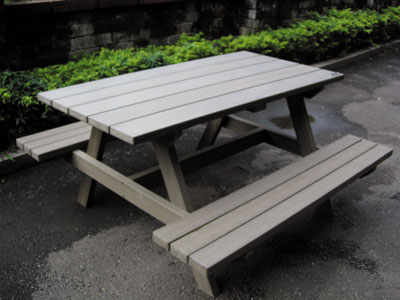
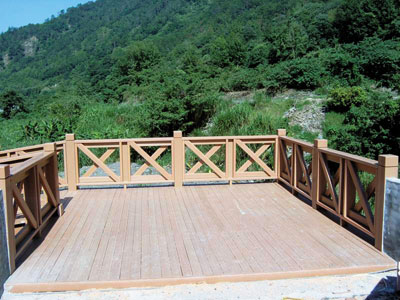
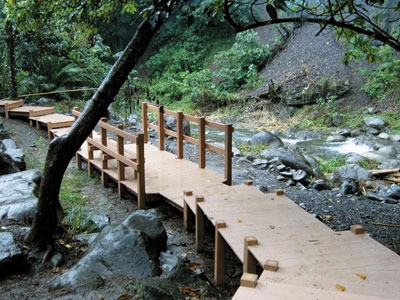
Fine Environment Technologies Co., Ltd.
Established in 2002, Fine Environment Technologies (FEtech) is an innovative building material manufacturer based in Taiwan, specializing in research, design and production of wood-plastic composites, wood-plastic compound, and fixed roof tile strips. "We are a pioneer producer of wood-plastic composites and related products in Taiwan," says S.P. Wu, the assistant plant superintendent. "It's high time to develop wood-plastic composites to replace natural wood, especially with global warming and the ensuing rising eco-sensitivity globally, and the general consensus that forests must be saved as sustainable stands are limited worldwide."
The manufacturing process of wood-plastic composites is quite complicated and needs sophisticated machinery. FETech is a technology-oriented company and has a strong R&D team of qualified specialists, so it can develop such high-end materials.
"Both recycled plastic lumber and recycled wood/plastic composite lumber are molded or continuously extruded into standard lumber forms. Such lumber is usually made with recovered plastics such as HDPE, LDPE, PET, or a mixture of various recovered plastics," Wu explains. "The HDPE raw material comes from post-consumer waste or primarily milk and laundry bottles and plastic bags, LDPE from plastic bags and shrink wrap packaging, and PET from post-consumer soda bottles. Wood/plastic composite lumber is made from a 50/50 mix of plastic resins and reclaimed wood such as sawdust from furniture manufacturing plants."
"Plastic and wood composite lumber has minimal impact on the environment since it eliminates use of our scare wood resources and keeps material out of the waste stream and incinerators," Wu adds. "Our company makes plastic and wood composite lumber out of a mixture of high-density polyethylene (HDPE) and rice husks. This kind of product is more rigid, resists moisture penetration, degradation from fungal rot, and is dust-proof and water-proof."
Officially Recognized
Boasting multi-faceted core technologies, FEtech has been invited by the Environmental Protection Administration (EPA) under the Taiwan Cabinet to help apply its technologies to official projects by joining a government-supported eco-technology program. The company has also cooperated with the Oriental Institute of Technology, a local vocational college, to develop a series of eco-friendly outdoor furniture, which has become popular.
The company today has a wide-ranging product line, including various decking and railing materials, roof tile strips, fiberboards, and outdoor furniture. "Unfortunately prices of wood-plastic composites remain higher than natural wood counterparts, which explains why composites are less popular. Lowering cost to overcome such a bottleneck is our goal and we're confident of being successful in the near future," Wu notes confidently.
Taiwan-market Focused
Previously exporting to Australia, Sweden, and the Philippines, FETech now concentrates on the Taiwan market. "We firmly believe in the huge potential of wood-plastic composites and are looking for international distributors to help with promotion, hoping to regain strength in the world markets soon," Wu says.

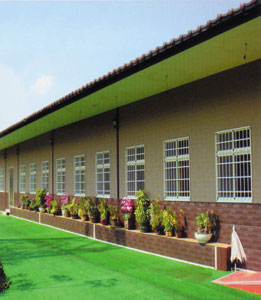
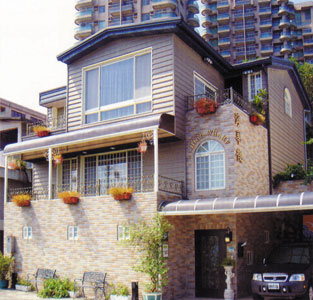
Chang Shing Metal
Established about 10 years ago, Chang Shing Metal Co. specializes in making building materials, particularly PU foamed boards and related products. "Having been in the building material industry for more than 15 years, I set up my own company about 10 years ago after seeing rosy outlook for PU foamed boards in construction," says Y.C. Huang, general manager of the company.
"In recent years many beautiful farm houses, villas and holiday homes are everywhere in the Japanese countryside. One can't help but ask what materials are used to build such structures. Foamed board actually. This material can be easily made with different patterns, designs, and colors," Huang points out. "Taiwan imported from Japan this foaming technology more than 15 years ago, with around 10 manufacturers today engaged in the manufacture, and Chang Shing is one of them."
"PU foamed board is green for its lightweight, flexibility, and recyclability," Huang says. "Buildings made of PU foamed boards can better resist earthquake due to being light enough, hence involves less weight transfer during quakes that can cause building damage. Plus buildings of foamed boards are better insulate against noise, as well as being virtually waterproof. Also its thermal characteristics are superior to conventional rebar and concrete, so building occupants inside PU foamed board structures are better insulated, feeling cooler in summer and warmer in winter."
Cost Effective
"Moreover, buildings of PU foamed boards and metal frame are cheaper by 20%-30% than those of traditional brick and cement, and can be built in less than half the time," Huang emphasizes. "We offer PU foamed boards in various patterns and colors to suit customer requirements. Also we can help customers to easily replace boards without wrecking a whole building, an inherent advantage of PU foamed boards. Such characteristic means that consumers can literally 'renew' a building by only replacing one wall."
To achieve world-class quality, Chang Shing imports raw material for PU foamed boards from Germany and key parts from Japan. The company runs an integrated plant in Tucheng, a community outside of Taipei, Taiwan, to produce PU foamed boards, 70% of which are sold domestically and 30% exported, mainly to Southeast Asia.




